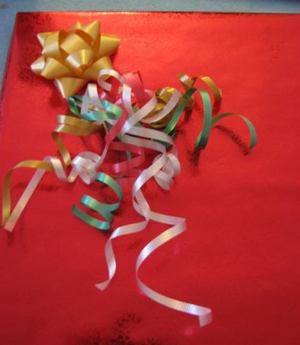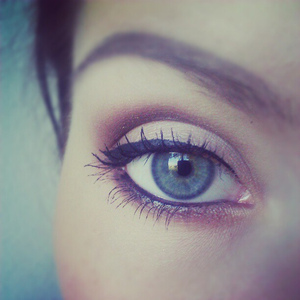Creating an easy science fair project only requires a little time and effort. Most of the pieces can usually be found around the house. If you are careful, the cost should be minimal. An easy science fair project is intended to complete the requirement for a project, but may not always be a ribbon winner. That being said, some easy science fair projects can be designed to win first place.
Begin the project by sitting down with your child and reading the guidelines for the specific fair that you will be entering. Depending on grade level, the project may need to have a research paper included. Watch for the minimum and maximum size for the display. Science fair projects are usually set up on tables with a limited amount of space available. Most fairs even restrict the height of the project for safety reasons.
One of the more enjoyable easy science fair projects that I helped one of my children make involved sail boats. The idea is to see what type of sail actually works best. Using a band saw, jig saw, or other type of saw that can cut out shapes, sketch the boats on a piece of 1×4 lumber and cut them out. I used boats about 10 inches long and the width of the board. They curved gently from the stern to a pointed bow.
Drill a quarter inch hole in the middle of the board to insert a piece of quarter inch dowel stock about seven inches long. This will give you a mast that sticks up about six inches above the deck of the boat. If the mast does not fit tightly, you can either glue it with a good carpenter’s glue or use hot glue.
Using some cheap cloth, make several shapes of sails. I made the tall triangle. For this sail, attach a cross member to the mast about one inch above the deck. Make the sail as wide as the boat at the bottom and as tall as the mast above the cross member. Glue the sail in place with hot glue and set that boat aside.
Make a second triangular sail. The only difference is that this one needs to be put on upside down with the point downward. The cross member will be at the top of the mast.
With the same cloth, cut a square or rectangular sail. Attach cross members at the top of the mast and one inch above the deck. Glue the sail to the mast and cross members, and a second boat is finished.
We designed a fourth boat using an unusual sail. Take a roller from toilet paper. Cut cardboard disks the size of the interior of the roll and glue them securely on each end. Cut a quarter inch hole in each of the ends that you have just glued into place. Attach a cross member to the mast about one inch long at a point that will let the mast extend completely through the sail. The sail will rest on this and will spin when the air hits it. This is called the Bernoulli effect.
Put about two inches of water into the bathtub. You will want to do the work on this part so that your child does not get electrocuted. He or she can record the results. Use a hair dryer for wind. Time how long it takes for the boats to reach from one end to the other of the bathtub. We found that the one with the toilet paper roll won every time. Run the tests about four times for each boat. Record the results.
You can make a graph of the outcome. We used a hypothesis based on some light research that the cylinder would win because its shape creates a vacuum in front of the boat and pulls it as the wind pushes from behind. Our results seemed to bear this out.
A second easy science fair project is to test the time that pills take to digest in the stomach. The problem with taking some pills is that they exit the stomach intact and never really fully digest because there are no acids in the rest of the tract to break them down. You will need some vinegar. We just used white vinegar, but about any kind should do. All you want is a weak acid to mimic stomach acid.
Obtain several types of vitamins. You can just borrow a few here and there from some of the people that you know that are health conscious. Try to get a multivitamin, a calcium tablet, maybe a gel cap of some sort, and several vitamin and mineral supplement tablets. You need at least a half dozen to make a good project.
Set up twice as many cups as you have types of vitamins. You will two of each pill. Pour room temperature vinegar into half of the cups. Heat the vinegar for the other cups to about 100 degrees to mimic the body temperature. Pour this into the remaining cups. You need the cups about ½ full.
Start a timer and drop the pills into the vinegar. Keep good track of which pills are in which cups. Time how long it takes for the pills to dissolve. Remember that most of the time the pills will only be in the stomach about 30 minutes. Do not leave them longer than this.
Carefully drain the vinegar and measure the size of the undissolved pills. Most of them will have a significant amount of the pill still solid. To enhance this easy science fair project, you may want a third set of cups with warm vinegar that you stir gently a few times to mimic stomach action.
Record which pills did the best and worst. Use this data to write up the results. You can make charts and drawings to show the outcome. You may want to take pictures.
The third easy science fair project involves doing a survey of a farm pond and comparing it to a running stream. This will work best in warmer weather, but some results can be obtained even in winter with a little more work. Go to the library or high school and get a book with information on fresh water plankton. You will need this to identify the organisms that you will find. You will also need a microscope with at least a 300x lens.
Go to a local farm pond. Find a really green one if you can. Dip up a few cups of water from different places around the pond. Take a picture of the pond and record where the samples were taken. Next, go to a stream and repeat the process. You will have more diverse results if you go to stream that is actually running.
Take the labeled samples home and examine them carefully under a microscope. You will need to try to get samples where you can see debris and/or things swimming around. Make drawings of everything that you see even if you cannot identify them all. Try to segregate the plant life from the animals. At the plankton level this is not always easy. Just get close. Things that are green tend to be algae. Identify as much as possible.
Compare the type of organisms found in the pond to the stream. Seek to answer questions like: Is more plankton in the pond plantlike than the plankton in the stream? Also, try to figure out about how many organisms are found per unit of each type of water sample. Make appropriate charts for displaying the results.
Even on easy science fair projects, it is important to make a good display. A nice hinged two-part display board works well if you do not buy a ready-made one. Some quarter inch plywood is inexpensive and durable. Attach all of the charts and pictures in an easy to follow manner.
If you have done a research report, put it in a nice report cover and lay it in front of the project. Display any of the materials that you can with the project. For example, some jars of the water from the last project with labels on them would make a nice addition. Each of these three projects won blue ribbons at grade school and junior high science fairs.




